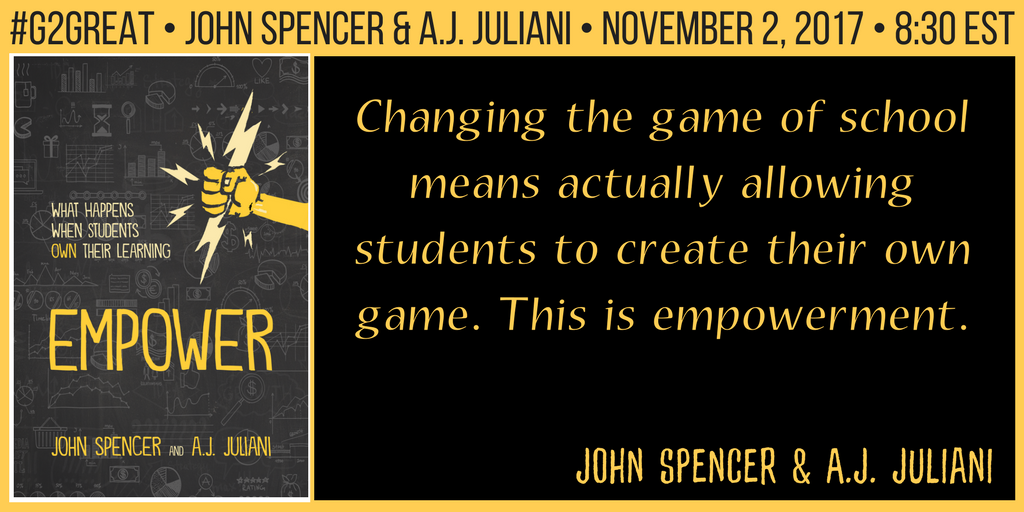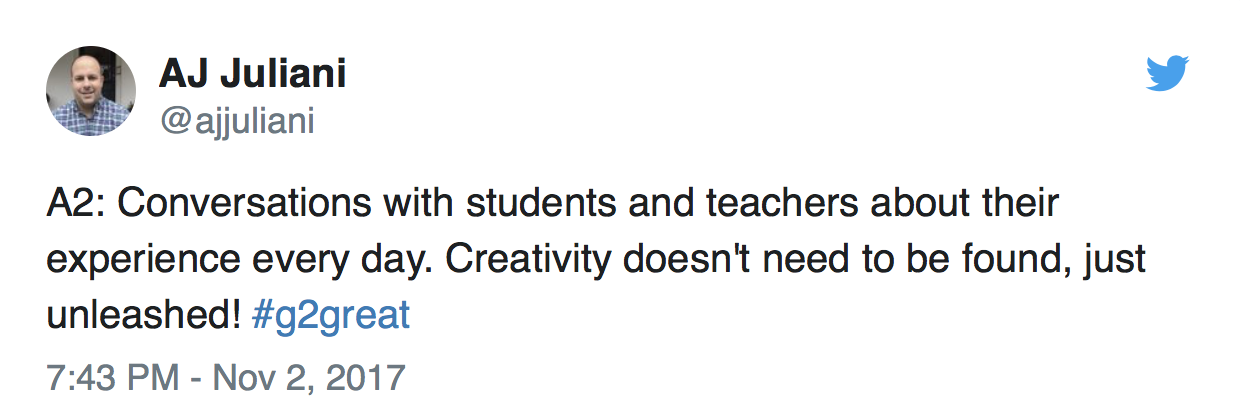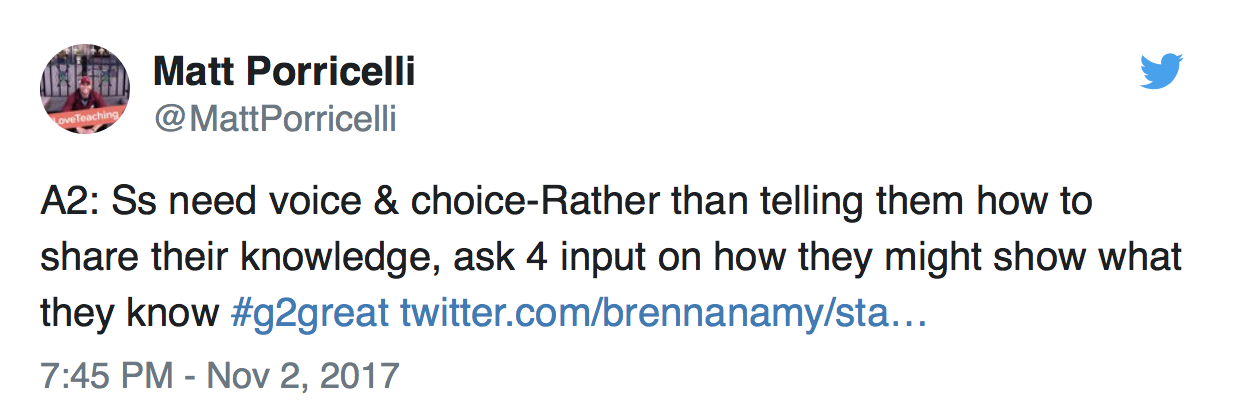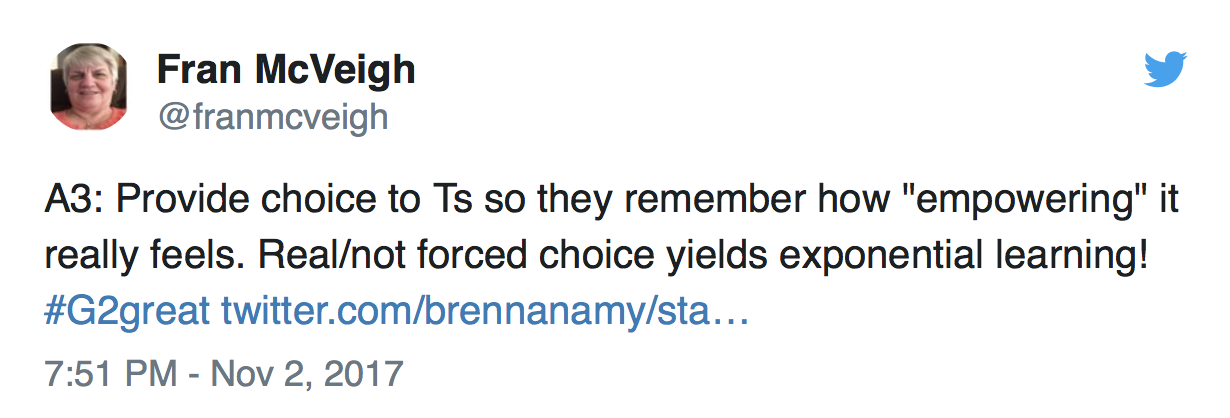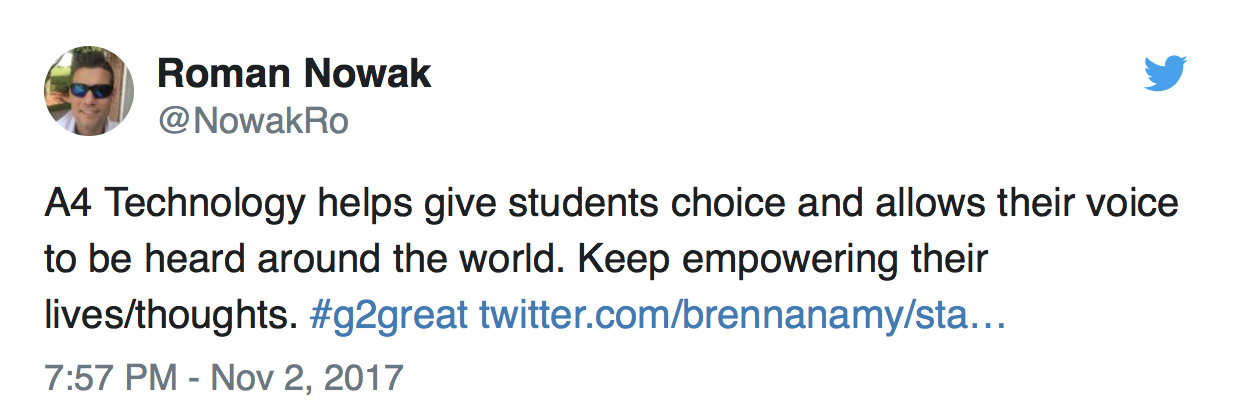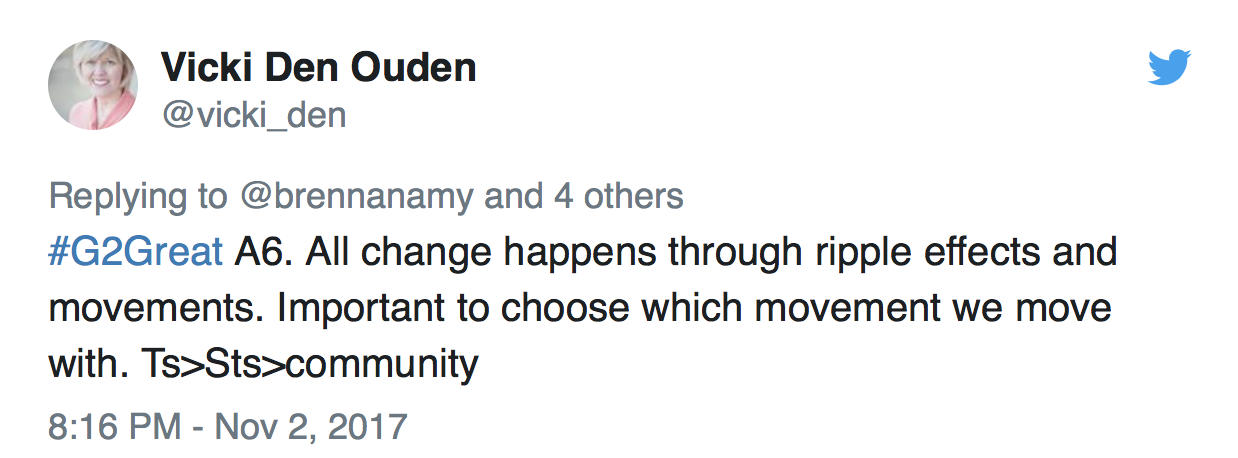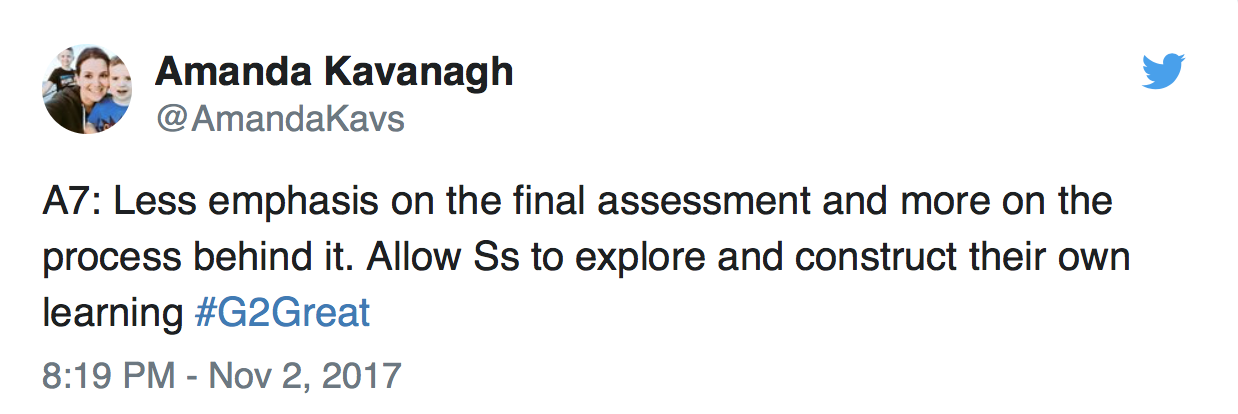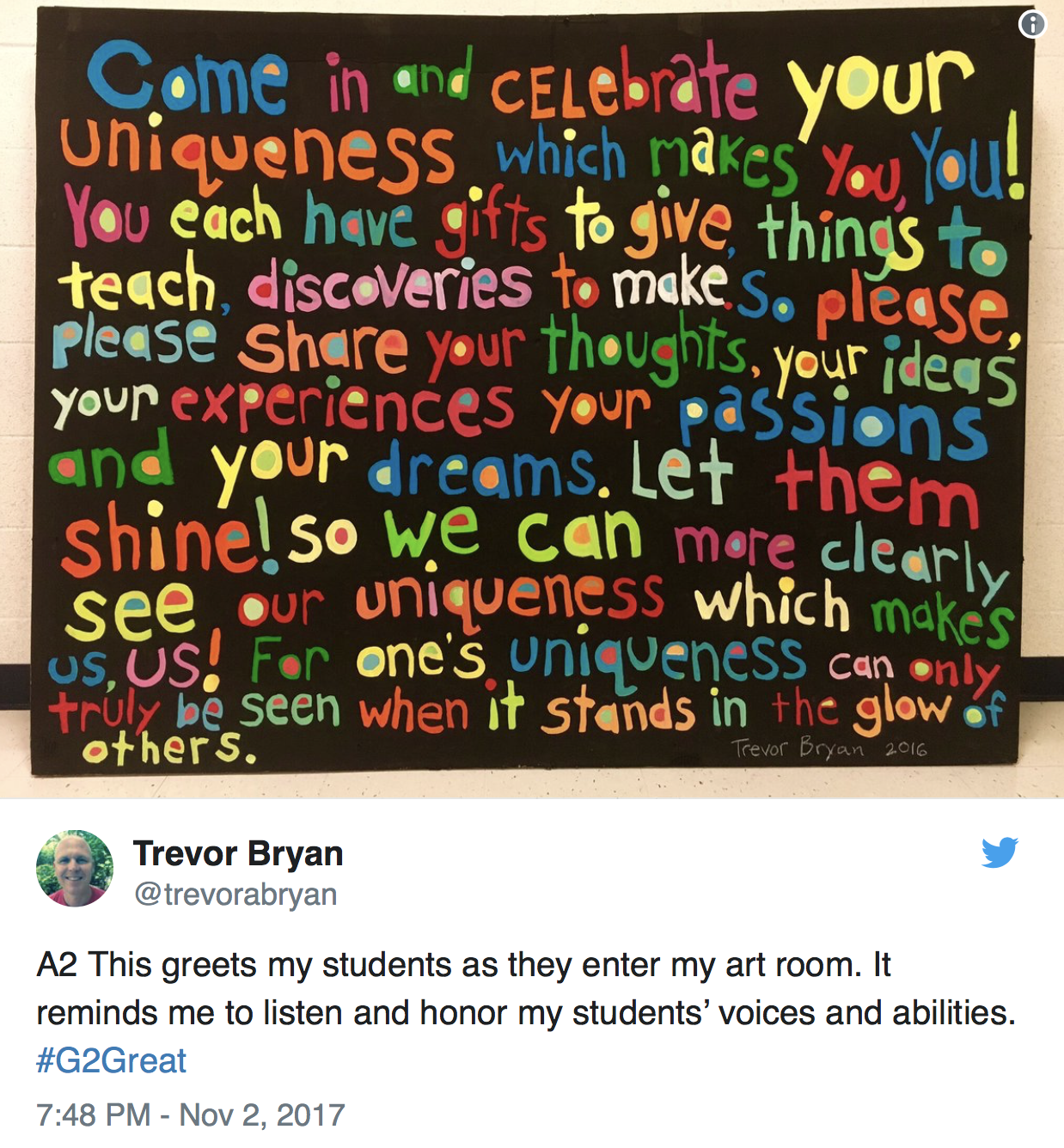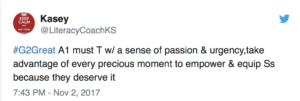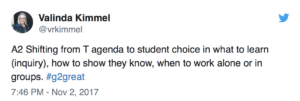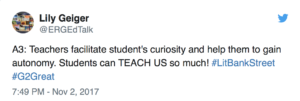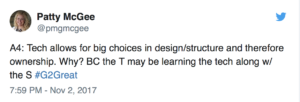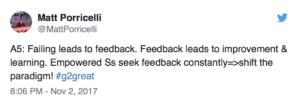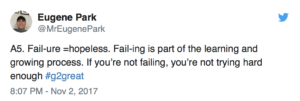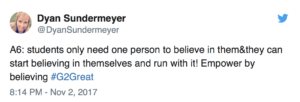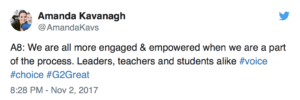By Amy Brennan
On November 9, 2017 #G2Great was honored to have Carl Anderson as a guest host. When we think about conferring in writing workshop, Carl Anderson is the one we all look up to and want to learn from. He is who I attempt to channel anytime I sit down with a child to confer about their writing. The first words that come out of my mouth when I sit next to a writer are taken from Carl. I sit down and say, “How’s it going?”
Relationships
The numerous times that I have seen Carl speak at Teachers College Reading and Writing Project and the most recent when I was able to participate in his section during the writing institute last June always causes me to pause. The thing about Carl is that he takes something, which arguably is the most challenging part of the workshop model and puts it within your reach. He makes sure that no matter what your experience is you can sit next to a child and begin to help that child become a better writer.
Even in Carl’s first tweet of the night he began to develop relationships with all of us who gathered around the #G2Great table to talk about conferring that night. He started by asking us, “How’s it going?”
Carl shows us that conferring is about building relationships. When we approach a writer for a conference and think first about building the relationship or getting to know the writer it does not seem so difficult. It allows us to begin to confer with students in reading and writing. Carl often says, “You cannot get better at something unless you do it.” This I have heard him say numerous times when talking with teachers who share their struggle or sometimes worries about conferring and getting it right. When we approach the conference through the lens of a getting to know a writer, the pressure reduces and we can just do it! In turn each and every conference we have will teach us to become better at conferring.
Relationships then develop as we open the conversation with our writers. We can begin to help a writer grow as we get to know them and develop a trusting and supportive environment. Writing is risky, and that trust and support is necessary so that a writer will take the risks they need to as they develop their writing. Writing is also very personal, and that too requires a trusting, supportive relationship.
Reflections
Conferring is an opportunity for reflection. In a conference it helps the learning process to allow some space for reflection. As the teacher, it seems that the first point of reflection comes when I review my conferring notes from my last visit with the writer. The next reflection point comes after I research what the writer is doing or after the writer tells me how their writing is going. I need to reflect on this in order to make a decision as to what I will teach that writer today. In reflecting on that I need to identify something that the writer will carry with them not only on this piece, but to other pieces they write. This is consistent with Lucy Calkins’ message in that we focus on teaching the writer, not the writing. Making this decision is significant enough to require a moment of reflection.
Additionally, if we want to maximize the learning experience for the teacher and the student we have to consider John Dewy’s wise words, “We do not learn from experience… we learn from reflecting on experience.” Often making space for the writer to reflect or process their thoughts is a time when I jot my notes or reflect myself, this helps me to make that quiet time for the writer to reflect.
Revisions
Writing is all about the revision, this is the most powerful, yet difficult part of writing. The reflections allow for the possibility of revision which is the pathway to improving the work of a writer. Each time a writer makes a revision the writer is trying a new move, and these moves can be used on any writing. The writer takes these moves with them everytime they write.
Revision for the teacher who is conferring I would argue is just as important. Once I reflect on the writer, I can make revisions to my teaching plan for that writer. That revision becomes another conference or teaching point for a conference that I can put in my toolkit. I often envision my own conferring toolkit like a large handbag with many cards in it, and everytime I confer with a child I place a new card in my handbag. Each time I revise one of those cards I make a new card. I think that multiplying factor is what gives me the motivation to just sit with a writer and talk about what they are doing as a writer. It removes the intimidations that I once had, because I know this conference will be added to a new card to place in my handbag. I know that when I sit with a student I can always pull one of these cards from my handbag, if I need to.
Thinking about revisions in this way extends the conference from that one conference or that one writer to every conference or every student I will confer with over the course of my time talking with writers. The potential is truly limitless, especially when I reflect, share and collaborate with colleagues.
Carl Andrerson brilliantly starts conferences with “How’s it going?” This simple, yet powerful question opens up so many possibilities and extends beyond a writing conference. His book, How’s It Going? is one of my most reread and worn books. His first tweet of the #G2Great Twitter Chat included his perfect question, “How’s it going?” This demonstrates the power of the question and the insight that Carl shares with us. It carries over to all areas of meeting with children, just the other day I had the opportunity to sit down with several children in the principals office and the first thing I said was, “How’s it going?” It provided an opening to a conversation, it established relationships and allowed time for reflections and revisions in our thinking.
























